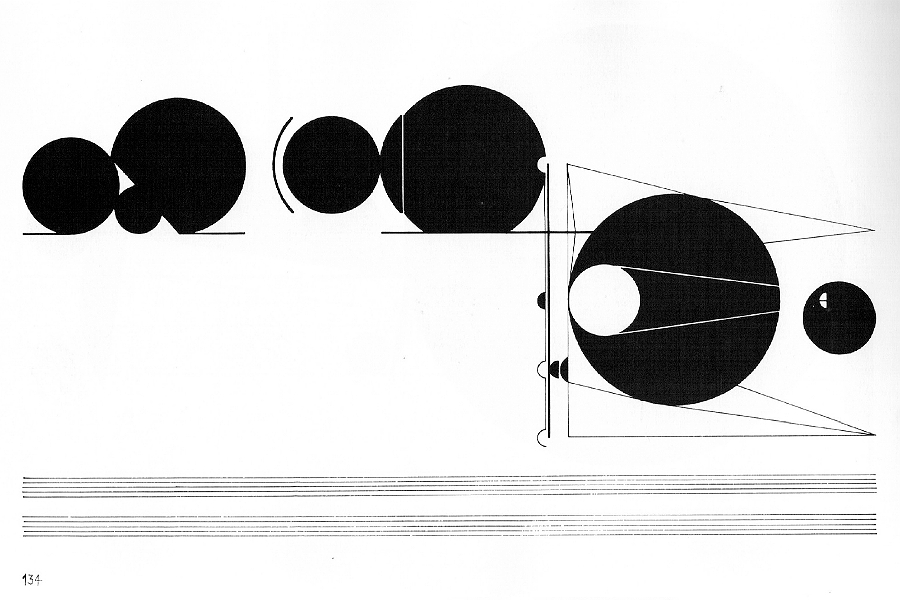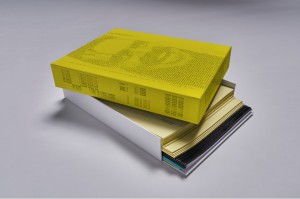Sound and Vision:
Cornelius Cardew’s Treatise

C James Fagan ponders a 20th Century piece of composition, created in part to subvert the status quo. Is it still relevant, and what is a graphic musical score?
I’ve decided to see a performance of Cornelius Cardew’s Treatise, as performed by the a.P.A.t.T orchestra; now there’s a problem with that statement. ‘See’ is very much the operative word, but this is a musical composition, surely I must be going to ‘hear’?
My choice of verb stems from my prior knowledge of the piece, and the fact that the score for Treatise is a graphical one.
Eschewing the normal lines and symbols of traditional musical notation, a graphical score replaces them with shapes, colours, marks etc. This was a common tool of modern composers such as Ligeti and Stockhausen, who found that traditional notation was inadequate for their needs. It was while working as an assistant to Stockhausen that Cardew embarked on what could be considered the peak of graphic notation, the 193 page Treatise.
It almost feels counter-intuitive to be listening to something that appears to have such a visual basis. Or is it perfectly natural? Isn’t all musical notation a collection of symbols which denote how the notes sound, how they should be played? I wonder how radical this score is from my vantage point in the earlier 21st century to appear to be part of the continuum of composition rather than a complete break from it.
I began to mentally compare Treatise to La Monte Young’s Compositions 1960, which it could be argued are more radical still – forgoing notation altogether – and are a series of instructions such as ‘draw a line and follow it’ or ‘push a piano through a wall’. They abandon any sense of traditional composition or common sense.
Now, my knowledge of contemporary composition is slight, and thinking about these pieces I’ve come to realise that the ‘radicalism’ of them does not lie solely in their composition, but also within their interpretation; in allowing, enabling the players of the piece to do what they wish with the instructions provided. Cardew’s intent was to subvert the traditional composer and player mode, the players are even expected to create their own rules regarding the piece: while the score is written, it does not dictate.
That said, I can’t help but consider that somehow the work has already been completed in the minds of the players and in my own. As with La Monte Young, the act of thinking about the piece somehow activates it. That the score exists as a conceptual idea, that imagining the shapes and lines, involves me in a process of synaesthesia somehow, and the piece has been completed.
Maybe it hasn’t. I’m still in a pub around the corner from the venue, making notes on the back of an envelope. I could forgo this thinking and hear what the musicians have in mind.
Earlier, back in the Kazimier Garden where the the piece was to be performed, people were readying themselves, wondering whether it had already begun. There is an official introduction and the piece begins proper. The score is projected on a screen for us and the players. It’s when watching the lines, circles, blocks that I begin to wonder about why we associate sounds with certain shapes. Where is it written that a continuous line equals a continuous note? It’s a cultural assumption. It is during this opening that I begin to think about these cultural assumptions, about how different it might sound if Middle Eastern musicians where playing.
It’s possible that there is an expectation that because this is contemporary composition, it will always be the usual collection of sustained notes, random clangs and vocal mumblings that are part of its history.
It’s interesting to note that these ‘cultural assumptions’ are at work while I watch the score roll by. Before me I see the layouts of future cities, road maps, electrical diagrams and strange landscapes all filled with a stark precision. I’ve come pre-loaded with an idea that line drawings, especially ones that are black and white and appear so precise, are technical drawings, leading to me seeing the score as one great schematic.
In reality, it’s an incredible piece of graphic art. I see it as a distortion or an abstract of traditional notation and music sheet. The lines that indicate notes set awry to scrawl and twist, to discover their own paths and become the music itself.
And what of the music? It is as if the resulting sound doesn’t matter somehow – it’s the fact they are producing one at all that is important. I also wonder if the rules that the players set for themselves limit possibilities. Again, the idea of Treatise as a conceptual piece comes to the fore, and I imagine it performed with plastic bags or as a spoken word piece.
But, for all that conjecture, did I like it? That’s a difficult question to answer, as Treatise is a piece that belongs to the 20th century, a piece that attempts to strip away the ideas and aesthetics of previous generations. A piece that belongs to the age of relativism where there is no good or bad only differing perspectives and interpretations. Treatise exists to be reinterpreted, to be seen, to be heard; essentially to be.
There is little to add, other than to congratulate the Moth who embodied the spirit of conceptual freedom by flying in front of the projector throughout the night.
C James Fagan





